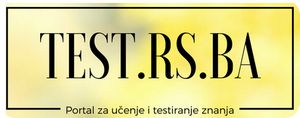
With the majority of teachers using technology in their classrooms, digital teaching methods are increasing in popularity. The days of chalkboards, worksheets, and repetitive learning. Technology is said to provide numerous benefits for students' learning. However, some critics claim they're distracting. Do the advantages outweigh the risks? Let's look.
What are the advantages of technology in the classroom?
Here are a few ways that technology can enhance the learning experience for teachers and students:
For Students
Technology helps educators accommodate the three primary learning styles: auditory, visual, and kinesthetic when traditional methods might be insufficient. Here are some examples:
Visual Learning:
Utilizing PowerPoint slides (within Google Classroom) assists in defining key elements using diagrams and images. YouTube videos that provide directions for complicated subjects as well as 'walk-throughs' assist visual learners in focusing and better understanding the subject.
Auditory Learners:
Zoom as well as Google Meet as part of an online learning environment allows learners who are auditory to communicate and listen to their classmates and their teachers while enhancing their communication skills. Audiobooks and reading apps on tablets like Me Books provide young students with the capability to listen to recordings of their voices or record their voices to learn how to read. This technology aids new readers in articulating new words.
Kinesthetic Learning:
Interactive Simulations PHeT which is operated through the University of Colorado Boulder is a site that provides educational games for children learning science and math. Students who use their kinesthetic senses using these games, develop skills like making an atom or conducting an online experiment on the solubility of a substance.
Technology can improve collaboration and participation, as well as promote inclusiveness in the home, online as well as in schools. Chats in groups, hashtags, and event pages provide forums online for students to voice their opinions to a wide audience discussing ideas and asking questions across the borders of geography.
The ability to work with students outside of their circle of peers gives them the chance to share ideas, knowledge, and opportunities for learning with those they might not have had the opportunity to do otherwise.
Digital literacy is crucial to be able to enter college and become career-ready. For example, applicants who are preparing for college can visit studycrumb and find many practical tips as well as free tools to help them prepare for the entrance exam.
By making use of technology in classes, educators can help prepare students for the complexities in the workplace and the best ways to deal with these issues. If the teacher or student is suffering from a problem and someone else is deciding to create a business or team to address it with technology. EdTech helps students collaborate with their peers at school and at work.
For Teachers
Teachers can help create an engaged learning environment and active learning through the use of technology. Polling online or quilts are two examples. Technology can also create a lively classroom where textbooks are digitally digitized using embedded QR codes and links that allow students to help students review and test their material.
Knowing the latest technology will help teachers to incorporate new tools. For instance, software that is specifically designed for assignments or the creation of Flipped classrooms. In this setting, students can view pre-recorded lectures for homework and then arrive in class prepared to discuss the material and contents.
Technology advancements can reduce teachers' workloads by automating repetitive tasks as well as parts in the process of instruction. There are instruments to design and grade tests. The majority of them will upload the test results to databases, which makes it easy to check each student's score.
Engaging with parents and students can be time-consuming. Texting and social media allow teachers to connect with all of the community and establish an intimate conversation with each student and parent. Automoto.io helps sync calendars with spreadsheets online and postings to social media sites, and organize the contact information of each.
Google Home and Alexa from Amazon aren't just to play music. in the classroom they could assist with critical thinking and time management by using timers, reminders, as well as voice-activated lists of tasks. The sharing of information between parents and teachers is a process that requires practicing and organization.
Airtame allows teachers to wirelessly display digital signage from any device, on any screen, and has all-in-one cloud management capabilities. If a teacher can no use their screen on Airtame the school is able to display Rise Vision digital signage content on the device to keep the school updated with announcements warnings about emergencies and posters.
What are the disadvantages of technology in classrooms?
Technology definitely has its advantages for the classroom. While teachers are enthralled by the latest ways of improving efficiency, they also come with a drawback.
Smartphones can cause distraction. For the majority of the time students use their phones in class, they're focused on tweeting, texting, and using their social networks more than studying. To stop this, teachers must learn more about how to control their devices effectively.
There is no technology that can be a substitute for or replace teachers. Teachers love their job and possess the knowledge and experience to lead students to the next stage in their life. Technology isn't the answer to all issues in the classroom but it's an added-on to improve the learning experience.
The latest digital technology in classrooms needs supervision and education. Teachers need to be successful in their classrooms as well as online, using screens and technology platforms. Studies have shown that almost three-quarters of teachers feel that the internet, as well as additional digital devices, have significantly expanded the variety of content and abilities they need to know. Nearly half of them say that it has increased their workload.
There is also a claim being made for the idea that technological advancements can improve the achievement gap. Classroom technology, just like any other technology, costs money. If a school is implementing it the device could have to be put in place for (on average) at least 20 classrooms. Certain school boards in rural districts don't have the same resources as urban districts, which affects the ability of students to learn.
How many teachers and schools utilize technology in their classrooms?
As of 2008, every U.S. public K-12 school was equipped with computers used for teaching purposes. 97% of public K-12 school teachers said they had one or more computers in their classrooms and 69% reported that they or their students frequently or occasionally utilized computers in class. Apart from computers, most teachers said that they had these devices in their classrooms each daily:
- LCD Displays or projectors with digital light processing (84 percent)
- Digital cameras (78%)
- Interactive whiteboards (51 percent)
K-12 teachers reported that 47 percent of their students had access to mobile devices on a regular basis inside their classrooms. In terms of the devices students were using for schoolwork during the day:
- Utilization of their own devices (58 percent)
- Laptops for schools (32 percent)
- Chromebooks for school (16 percent)
- Tablets for school (14 percent)
All 13% of students in high school students and 21 percent of middle schoolers are unaware of smartphones or computers.
Digital technology is essential to the teaching of science?
Researchers and policymakers have discovered a variety of advantages of online learning, such as greater access to tools, personalizing learning as well as helping struggling students. Research studies from the past indicate the positive impact of technology in the classroom.
A study of research found that laptop programs with one laptop only had a small impact on a student's academic performance in mathematics and science. A few studies concluded that the power of technology to enhance students' performance is contingent on the way it is used to teach.






